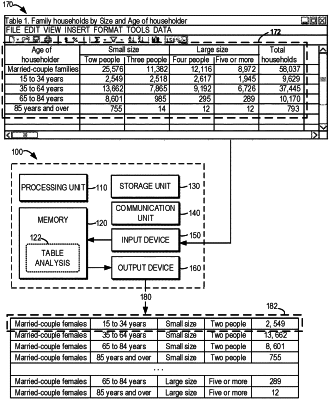| CPC G06F 40/18 (2020.01) [G06F 16/2246 (2019.01); G06F 40/30 (2020.01)] | 15 Claims |

|
1. A computer-implemented method, comprising:
detecting at least one header area and a data area of a spreadsheet table, the spreadsheet table comprising data items filled in cells arranged in rows and columns, the at least one header area comprising cells filled with data items for indexing or describing data items in cells of the data area;
determining a hierarchical structure of the data items in the at least one header area;
causing presentation, in a user interface, of the hierarchical structure to a user;
receiving, via the user interface, a user selection of a hierarchical level or at least one node in the hierarchical level for transformation; and
transforming the spreadsheet table into at least one relational table based on the user selection, the at least one relational table having the data items of the spreadsheet table associated with the selected hierarchical level or at least one node in the hierarchical level arranged in a unified structure.
|